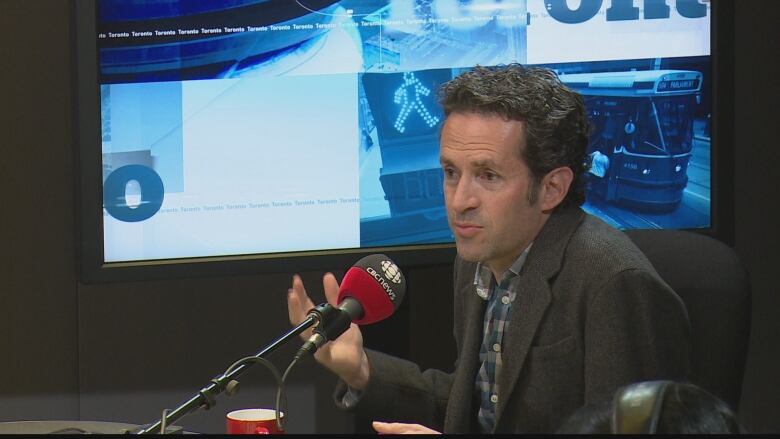Project aims to make Toronto more butterfly friendly, 1 wildflower patch at a time
Butterflyway Project involves planting in 2 neighbourhoods in the city

Canadian environmentalists are hoping a new project will create a network of landing spots for bees and butterflies across Canada this spring.
The Great Canadian Butterflyway Project, being launched by the David Suzuki Foundation, involves the planting of wildflowers in patches to provide food and shelter for native wild bees and local butterflies.
Jode Roberts, Toronto-based manager of Pollinator Projects with the David Suzuki Foundation, said the project has begun in neighbourhoods in five cities Victoria, Richmond, Montreal, Toronto and Markham.
In Toronto, the project is focused on the neighbourhoods of Humewood-Cedarvale, near Bathurst Street and St. Clair Avenue West, and the Beach.
Roberts told Metro Morning that abutterflyway is not a highway but more of a safe passageway made out of wildflowers.
"We are not building highways for butterflies and bees," Roberts said Tuesday. "What we're hoping to do is build those patchworks of wildflowers that they feed on and rely on for shelter."
In each city, the foundation has recruited a team of "keen" community volunteers, calledButterflyway Rangers, and given them a mission to plant patches of native wildflowers in yards, schools, streets and parks, "the usual places and also unsuspecting places," Roberts said.
All of the volunteers have been trained how to plant patches of pollinator habitat.

When at least a dozen "pollinator patches" have been planted in a neighbourhood, the patches will be recognized by the foundation as an official Butterflyway and will be included in a national Butterflyway Project map.
'Bits of urban fabric' can be transformed
Roberts said the idea is to have a series of patches made out of what he called "bits of urban fabric." He said even spaces on the edges of laneways, between buildings and pavement, could be used to plant wildflowers.
"What we're hoping is that there are patches that butterflies could land on in your yard, then move to the next," he said.
"You can take any space and transform it."
Roberts said the project is a way to bring nature home to Canadian neighbourhoods.
There are more 100 hundred species of butterfly and 340 species of wild bees in Toronto.

With files from Metro Morning












_(720p).jpg)


 OFFICIAL HD MUSIC VIDEO.jpg)
.jpg)



























































































